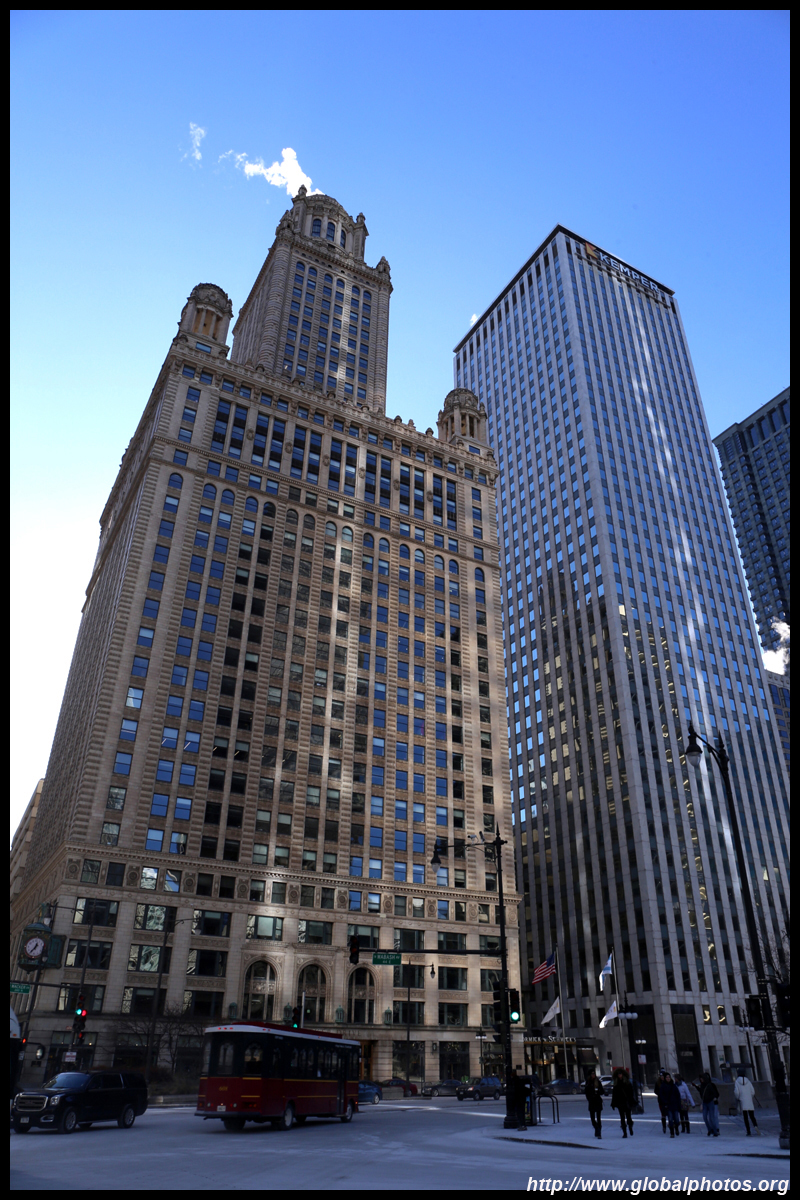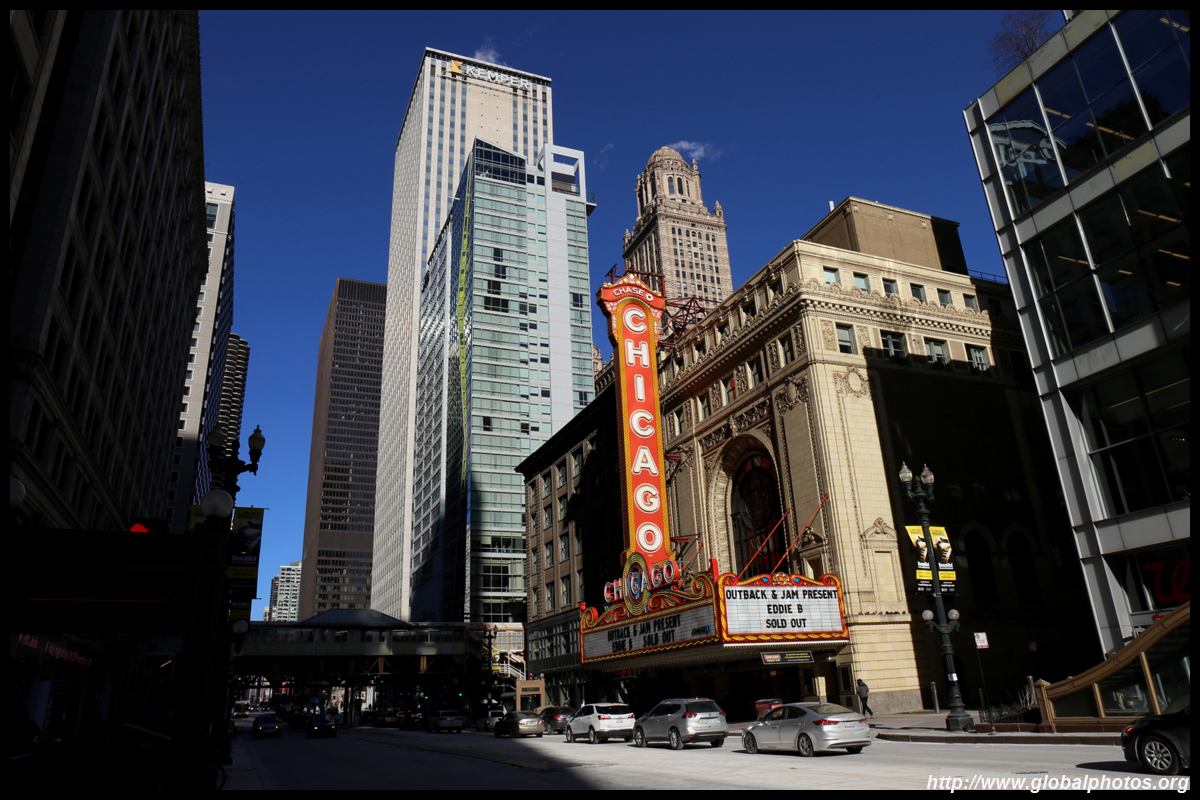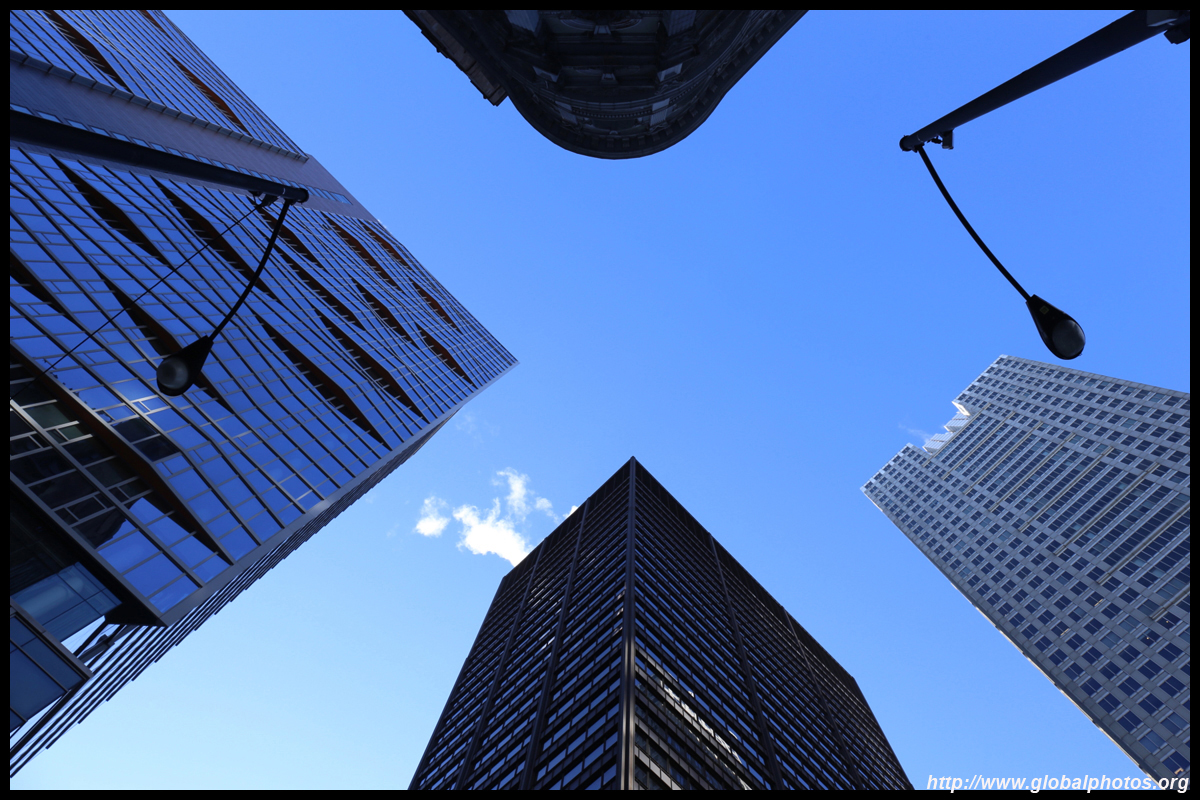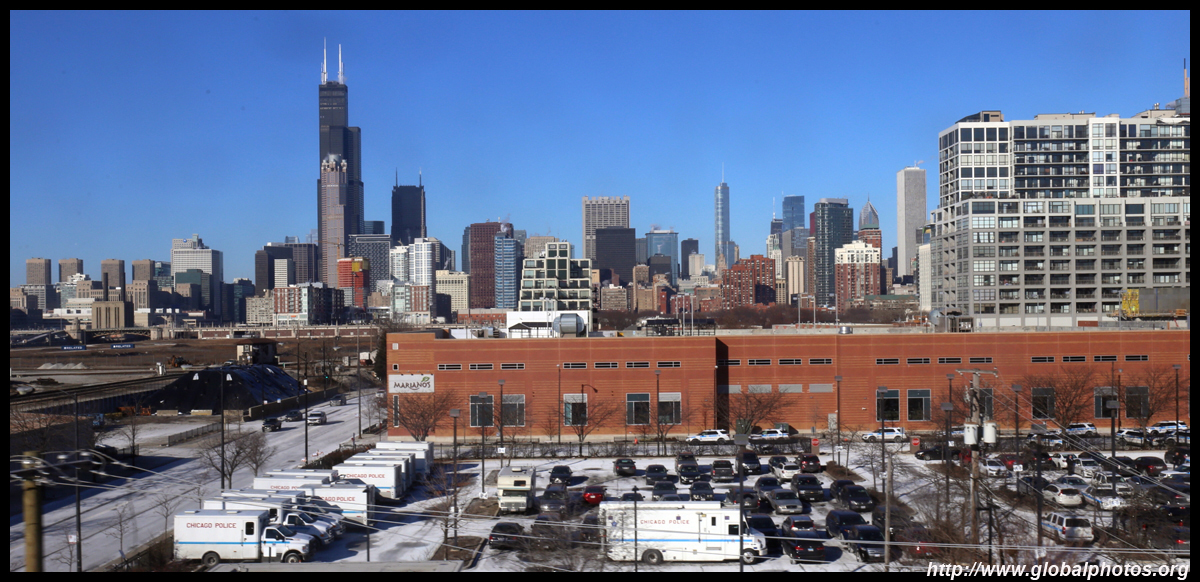Chicago Photo Gallery - Loop
Cross the Chicago River from the Magnificent Mile, and you have arrived in the Loop, Chicago's downtown, where historic skyscrapers mingle with new modern buildings.
Subway lines converge and loop around the core on bridges, giving some interesting photography opportunities and themes.
The Chicago Theatre opened in 1921 and has a big and bright neon sign bearing the city's name out front.
The 11-storey City Hall looks monumental from the outside with tall classical columns facing the streets.
Behind it a block away, the Gothic Chicago Temple was built in 1923 with offices and a chapel.
Across the street at Richard J Daley Center, Picasso's statue is intriguingly hard to decipher, and was a source of controversy when it was installed in 1967.
With many tall buildings next to each other, the wind tunnel effect is quite strong here. Signs warning of falling ice are everywhere. Even Willis Tower, once the world's tallest building, struggles to peek from behind.
CBOT occupies at the end of a skyscraper canyon and remains quite an imposing sight. Built in 1930, the 45-storey art deco-style building has interesting interiors but trading no longer takes place here.
I have never seen a fresh salad vending machine before, and it appears the items inside are still fresh.
The need for a new library in the South Loop surfaced in 1987 and the Harold Washington Library opened in 1991.
The subway offers great vantage points for the Loop's skyline. The Orange Line south of Roosevelt provides this view from the south :
The Green and Purple Lines just west of the Loop have several stations with skyline views.
To appreciate the Loop's urban development, drop by the Chicago Architecture Foundation to see the scale model. Formerly in the Railway Exchange Building, the foundation will move to a new site in summer 2018.
Outside, walk along South Michigan Avenue for more skyscraper canyons on the west side, contrasted by parkland on the east.
|
|||
































































